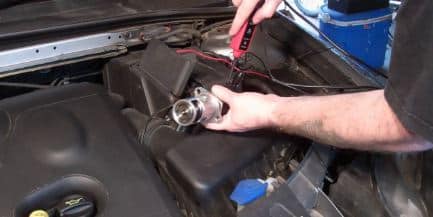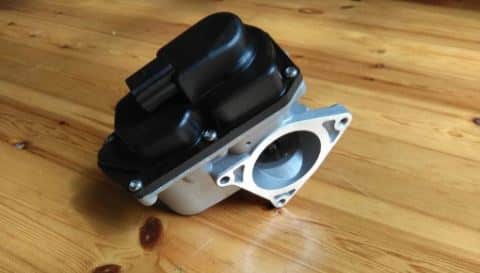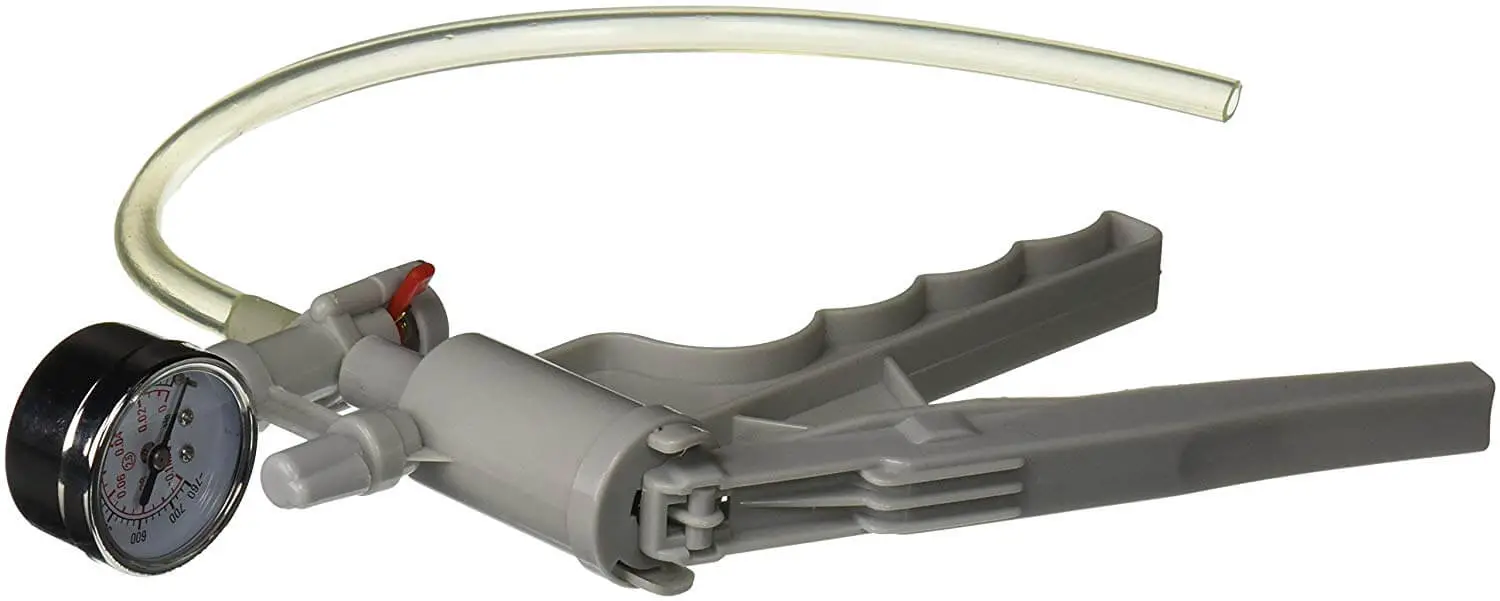
Table of Contents
Background
The exhaust gas recirculation valve abbreviated as the EGR valve is an emissions control device primarily intended to lower nitrogen oxide pollution. Oxides of nitrogen by properly in the engine’s combustion chamber. Nitrogen oxide is an inert gas and will start to build at temperatures above 2500 degrees Fahrenheit. The EGR valve recirculates some of this nitrogen oxide pollution back into the engine’s combustion chamber because the exhaust gas helps lower the temperatures of the air/fuel mixture.

Test EGR Valve
The EGR system gives a way to recirculate a small quantity of the exhaust gases that otherwise would have made its way into the public air stream. Exhaust gases are gases that have been burned, and they cannot be returned, so they are also called inert gas. Exhaust gases recirculated into the intake manifold must be precise and carefully controlled. Otherwise, the engine may stall and perform very roughly. In this article, we go in-depth to discuss how to test EGR values. However, first, let’s discuss the symptoms of a bad EGR.
EGR Valve Testing Procedure
Following the visual inspection here is how to test the EGR system:
-
Start the engine and allow it to reach operating temperature.
-
Prop the hood of the vehicle and latch it into place.
-
Disconnect the vacuum line at the EGR valve.
-
Connect a hand vacuum pump to the EGR valve.
-
Continue to apply the vacuum until the EGR valve opens. As the valve opens, the engine will begin to idle and may even stall. If this happens is when the EGR valve is opened, and it stops when the vacuum is pulled away from the valve, then you can be assured of the following:
- The partition in the EGR valve is good and not leaking.
- The exhaust pipes from the exhaust traverse on the intake manifold are good and permitting exhaust gas recirculation to happen.
- The valve seats tightly when it’s closed.
-
If the EGR valve doesn’t open when you apply the vacuum pump to it, the valve is faulty and need replacement.
Using a Vacuum Gauge
This method uses a vacuum gauge.
- Begin with a cold engine
- Unplug the vacuum line at the EGR valve and outfit a tee and vacuum gauge.
- Re-plug the vacuum line to the EGR valve
- Start the engine and check the gauge. The reading should be zero.
- Accelerate the engine RPM to 2000. The reading should remain zero.
- Allow the engine to warm up to regular operating temperature
- Accelerate the engine to 2000 RPM again, and the gauge reading should be between 1 and 4.
- If the reading is zero at this point, that means the CTO switch is not working correctly.
Symptoms of a Bad EGR
Rough Idling
If the EGR valve becomes stuck-open meaning it does not close once the exhaust gas has circulated through the intake manifold, then it will produce a rough idle. It’s a sound similar to someone who has a raw sore throat.
Poor fuel economy
This one may be more subtle and harder to notice, but if there are significant issues with fuel economy, then it may be predicting that the EGR valve is close to its doom or already malfunctioned.
Low acceleration power
Lack of power during acceleration is another common symptom that the EGR valve is plugged or malfunctioning. The air to fuel ratio of your vehicle will be inordinately changed.
Check engine light on
To accurately diagnose what the cause behind the check engine light is, you must plug a scan tool into the OBDII port. You can achieve this via Bluetooth for most newer model vehicles. However, if you don’t have a scan tool, you can get one for around $50 on Amazon.com. The specific code you want to look for is P0401 which signals that there is inadequate or reduced flow in the exhaust gas recirculation valve.
Components Connected to the EGR
Many interconnected devices are associated with the EGR valve. They include a host of sensors, manifolds, and vacuums.
Vacuum
There is an intake manifold vacuum which is found under the throttle plates in the carburetor and works through the pumping action of the pistons. There is also a venturi vacuum that comes from a hole in the venturi of the carburetor.
Vacuum amplifier
The vacuum amplifier is another device the controls the EGR valve. It uses the intake manifold vacuum and receives a signal from the carburetor. This is often the cause of why you may be experiencing a rough idle. It is usually because the vacuum amplifier is not receiving the right signal at the right time from the carburetor venturi. The venturi signals the vacuum amplifier what quantity of the manifold vacuum to deliver to the EGR valve. If too much of the manifold vacuum reaches the EGR valve, it would cause it to open wide and would permit more exhaust gas than is required to recirculate at idle.
Exhaust backpressure sensor
Sometimes this sensor is called a transducer. It has two parts to it: the sensor and spacer. Within the spacer, there is a tube that senses the exhaust backpressure. The sensor uses the back pressure to signal to the vacuum how much of it is needed in the EGR valve. This helps improve driveability and fuel economy so if you’re experiencing a lack of power during acceleration or poor fuel mileage then there may be a problem with this exhaust back pressure sensor.
Coolant temperature override switch
This switch is commonly referred to as the CTO switch and is located on the intake manifold. Its job is to sense the coolant and to stop the vacuum signal from getting to the EGR valve until the coolant temperature reaches a specified point. It also prevents the EGR valve from operating before the engine coolant has had a chance to warm-up. As a result, you’ll get better performance of the vehicle when it is cold outside.
EGR Delay Timer
The purpose of the delay timer is to prevent exhaust gas recirculation for a short duration after the engine is started. When the ignition is started, a vacuum solenoid is powered, and the vacuum is stopped from reaching the amplifier. After half a minute of the engine being launched, the EGR timer control un-powers the vacuum solenoid, and normal exhaust gas recirculation begins.
How to Test EGR Valve
Now that you know the various devices connected to the EGR, we’ll look at identifying and diagnosing problems associated with the symptoms.

Electronically actuated EGR Valve for VW BMN engine
Best Vacuum Pump for EGR Valve
This vacuum pump is what you will need to test the EGR valve. There are similar models available for purchase, but this one has faired the best. It is made by GSC international and is inexpensive to own. It is hand-operated, and the hose pump will plug right into the EGR valve. As you pump the trigger, the air will be displaced, and you will know if the EGR valve is working or not. It will work for both methods mentioned above.
Click here to see reviews and prices for the GSC International 4-2061 on Amazon.com
Conclusion
In conclusion, we have listed two ways to test the EGR valve. The product recommended will help you test the EGR valve and if you need help, let us know. Otherwise, pay close attention to the symptoms your car or truck is exhibiting and read your service manual to know the exact system and components you have installed on your vehicle. The exhaust gas recirculation valve is an important technology, and by properly maintaining it you will help in lowering air pollution levels while maximizing the driveability of your car/truck.
 by
by 